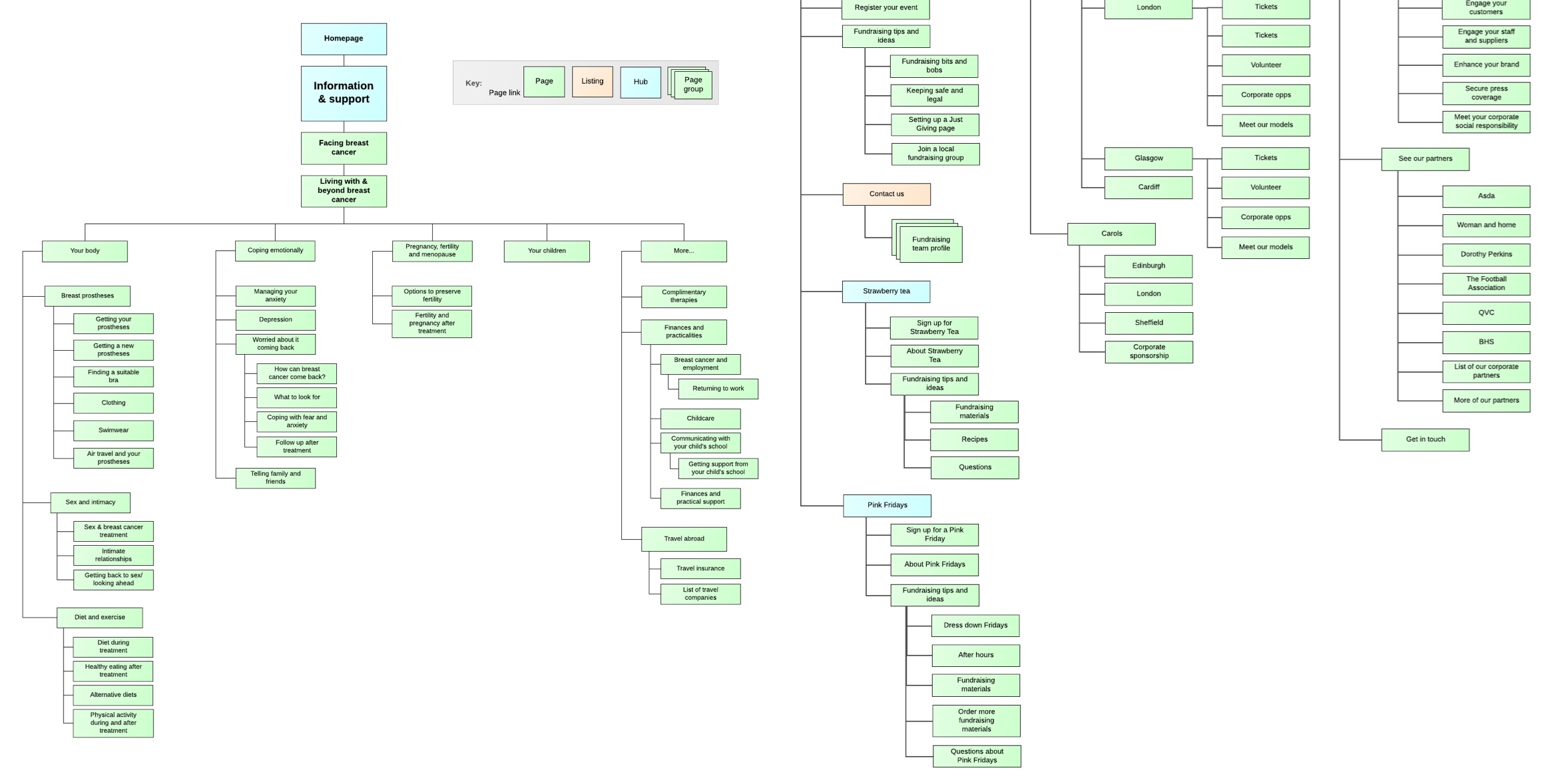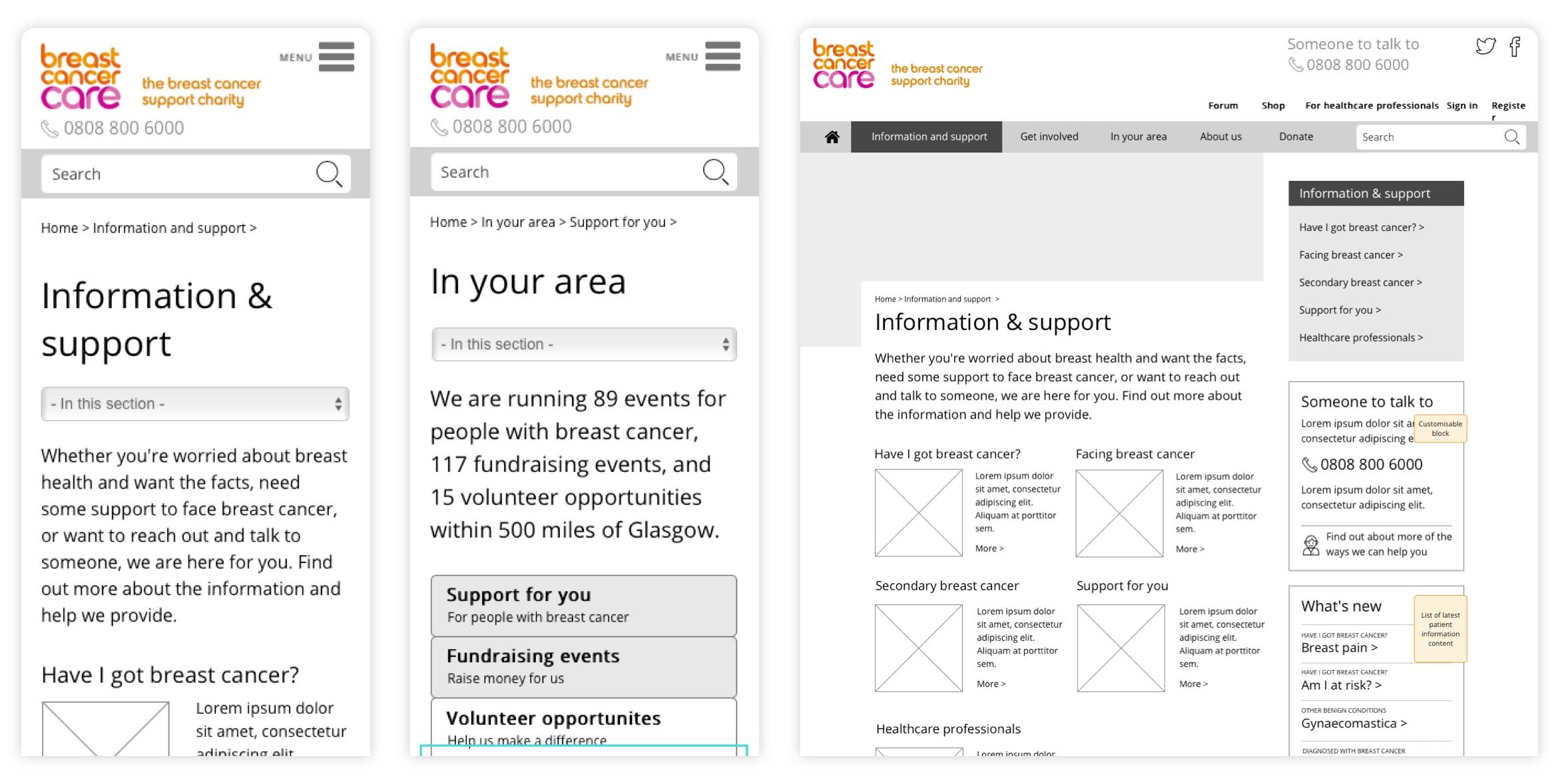Breast Cancer Care
Designing a new mobile-first, component-based user experience for Breast Cancer Care.
1 December 2018
Background
Breast Cancer Care is the UK's premier information and support organisation for anyone affected by breast cancer. Their website is one of the main ways that the charity delivers services to its users, including providing information and support.
Challenge
Breast Cancer Care (BCC) had developed a new strategy, using digital media to better deliver their support services. However, they felt their website was not up to the challenge – content was hard to find, and the build wasn't flexible enough to meet their new demands.
Our brief was to provide strategic input from the start, rebuild the website and integrate it with a range of external systems, including social forums and various payment gateways.
Solution
My challenge was to develop a new structure for the site which integrated BCC’s desired new functionality, while making it simple for visitors to find the content they need.
User research
BCC had begun an in-depth user testing project with a specialist UX consultancy before NDP was chosen as the web development agency. I worked closely with the consultancy during the handover process to make sure all their learning was folded into the finished UX, including attending labs sessions and insight playbacks.
User experience

↑ Sections from the site map, showing content hierarchy and structure.
I created a plan which could both be understood by BCC and used as a detailed blueprint for the development team. This included site maps, system diagrams, hundreds of wireframes, detailed user journeys and more.

↑ Example mobile and desktop wireframes.
A key requirement was that the site should be easily extensible – it should be possible to add new sections and features without requiring extra design and development time. It was also clear that we were not going to be able to wireframe every page which needed it and still maintain a reasonable budget.
I took the 'atomic design' principle and adapted it to work with Drupal. In short, atomic design is a system for design which takes the basic elements of a web page – headings, paragraphs, and builds them into modular 'molecules' which can be combined on various ways to form page templates. Therefore new templates can be built quickly from a library of pre-existing components.

↑ BCC pattern library, showing how the site could be built from a set of modular components.
Working closely with the design and development teams I created a style guide which showed how the basic HTML elements could be combined to form blocks, content displays – such as listings, teasers and grids, then how those elements could be combined to form templates, content types and more.
We carried this thinking through to the design, so new pages could be quickly created without having to design anything from scratch. Since the new site launched, we've created new sections and a redesigned homepage using the component system.
While the site has been redesigned following the merger of Breast Cancer Care with Breast Cancer Now, the information architecture and modular framework I developed remains in place.